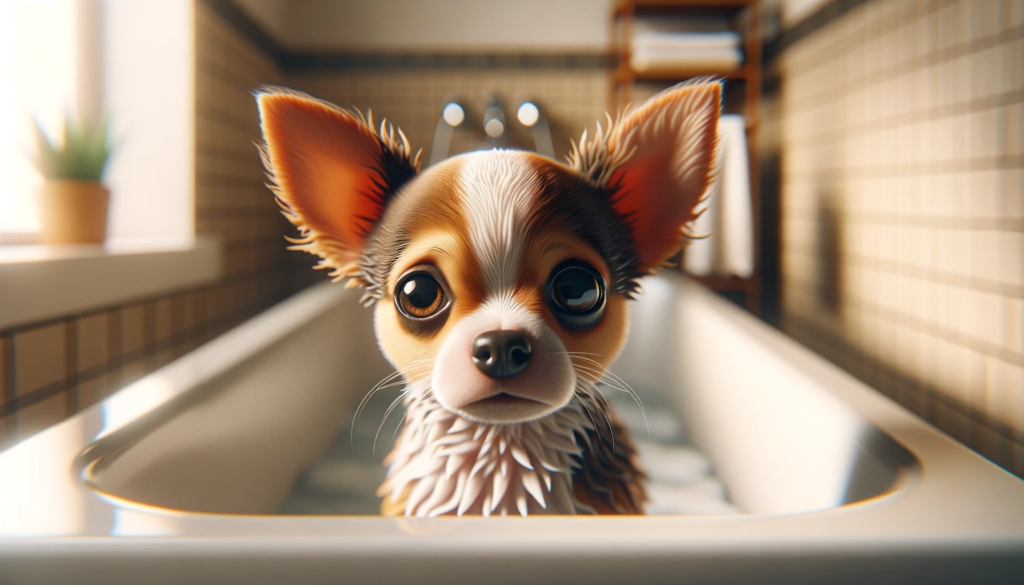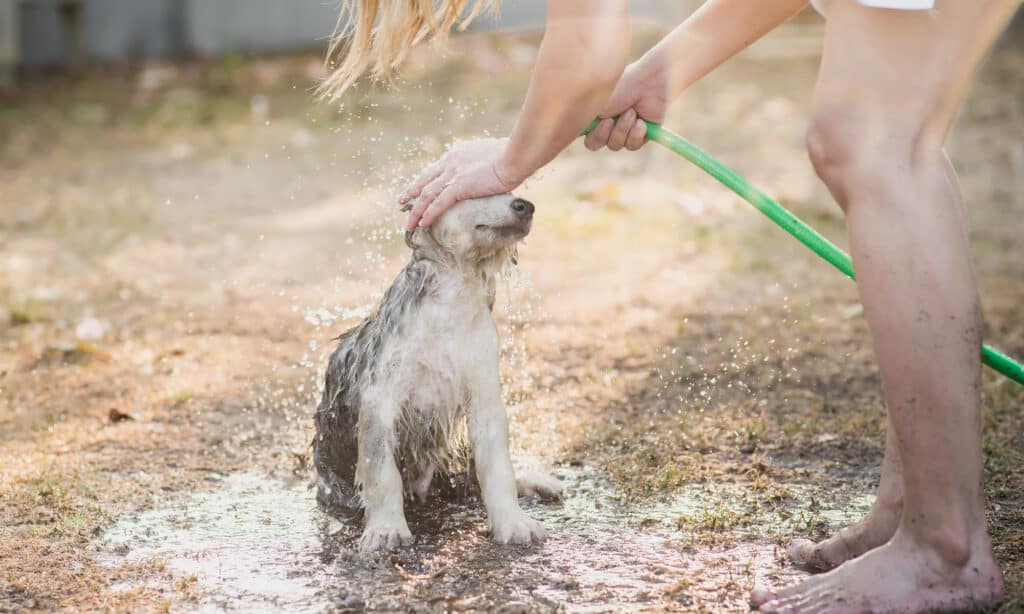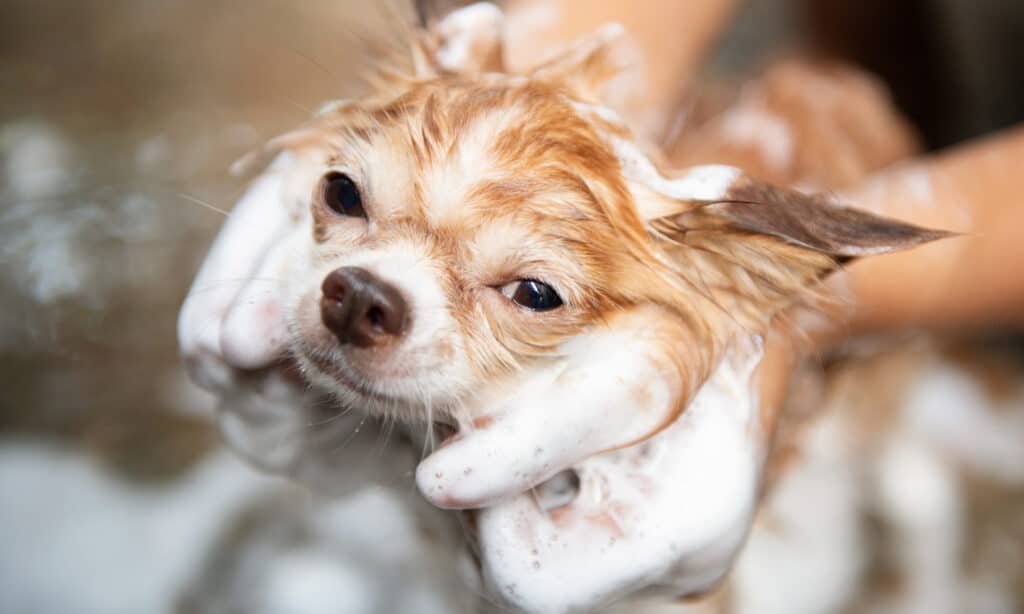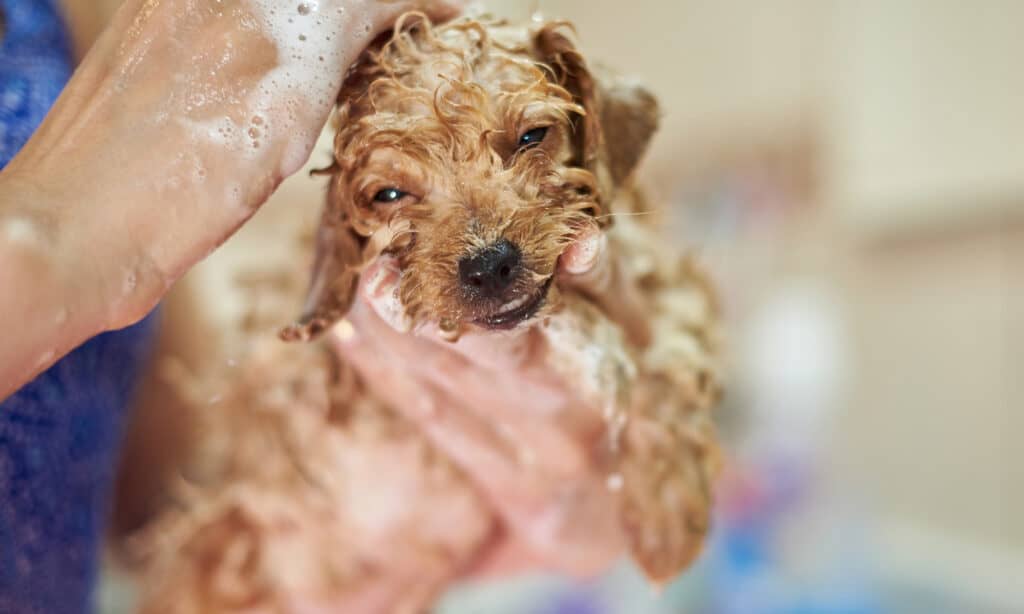As a loving pet parent, it’s natural to worry when you see your puppy shivering after a bath. While it’s not uncommon for puppies to shiver from time to time, it’s essential to understand the underlying causes and address any concerns. In this comprehensive guide, we’ll explore the common reasons behind post-bath shivering and provide practical solutions to help your pup feel comfortable and relaxed during bath time. By ensuring a positive and stress-free bathing experience, you’ll not only strengthen the bond between you and your furry friend but also promote their overall well-being. So, let’s get ready to learn how to make bath time a delightful experience for your beloved pup!

Common Causes of Puppy Shivering After a Bath
Cold Temperatures
- Inadequate room temperature: If the room temperature is too low, your puppy may shiver to generate body heat. Make sure the bathing area is comfortably warm before giving your pup a bath.
- Chilly Water: Using cold water for your puppy’s bath can cause them to shiver as their body tries to regulate their temperature. Always use lukewarm water, ensuring it’s not too hot or too cold.
- Wet Fur: Wet fur can lead to heat loss, making your puppy shiver to stay warm. It’s essential to dry your pup’s fur thoroughly after a bath to prevent prolonged shivering.
Anxiety and Fear
- Bath Time Stress: Some puppies may feel anxious or stressed during bath time, especially if they’re not used to it. This anxiety can manifest as shivering.
- Negative Experiences: If your puppy has had a bad experience during a previous bath, such as water getting into their ears or eyes, they might associate bath time with discomfort, leading to shivering.
- Sensitivity to Noise: The sound of running water or the blow dryer can be overwhelming for some puppies, causing anxiety-induced shivering.
Medical Conditions
- Hypoglycemia: Low blood sugar can cause shivering in puppies. If your pup hasn’t eaten for a while, make sure to provide a small meal before bath time.
- Hypothermia: Prolonged exposure to cold temperatures, especially in small or short-haired breeds, can lead to hypothermia, resulting in shivering as the body tries to produce heat.
- Infections: In some cases, shivering can indicate an underlying infection, such as a urinary tract infection or an ear infection. If you suspect an infection, consult your veterinarian.
- Pain or Discomfort: Shivering can also be a sign of pain or discomfort. If your puppy shows other signs of distress, like whining or limping, it’s essential to seek veterinary advice.

Solutions to Prevent Shivering After a Bath
Addressing the causes of shivering after a bath is crucial to ensure your puppy’s comfort and well-being. By implementing the following solutions, you can help prevent shivering and make bath time a more enjoyable experience for your furry friend:
- Ensure a Warm Environment: Ensure warmth during puppy bath with lukewarm water, heated towel or blanket. These measures will help maintain your pup’s body temperature and minimize shivering due to cold.
- Reduce Anxiety and Fear: Introduce pup to bathing gradually with positivity and calmness for a stress-free experience. Be patient and gentle, allowing your pup to become familiar with the process and associate it with positive outcomes.
- Address Medical Concerns: Schedule regular veterinary check-ups to identify and treat any underlying medical conditions that may cause shivering. Ensure your puppy receives proper nutrition to maintain healthy blood sugar levels and monitor them closely for signs of illness or injury.
By implementing these solutions, you can effectively minimize the chances of your puppy shivering after a bath and contribute to their overall health and happiness.

Additional Tips for a Stress-Free Bath Time
- Choose the Right Shampoo: Select a gentle, hypoallergenic, and age-appropriate shampoo specifically formulated for puppies. This will help prevent skin irritation and ensure a soothing bathing experience for your pup.
- Use a Non-Slip Mat: Place a non-slip mat in the tub or sink to provide a secure footing for your puppy. This will help reduce their anxiety and prevent accidental slips or injuries during bath time.
- Gentle Handling and Grooming: Handle your puppy gently and calmly throughout the bathing process. Speak to them in a soothing tone, and avoid getting water or shampoo in their eyes, ears, or nose. When grooming, use a soft brush appropriate for your puppy’s coat type to avoid causing discomfort.
- Rewarding Your Puppy Post-Bath: After the bath, offer your puppy praise, treats, or their favorite toy as a reward for their good behavior. Positive reinforcement will help your pup associate bath time with enjoyable experiences, making future baths less stressful.
- Start Early and Be Consistent: Introduce your puppy to baths at an early age and maintain a consistent bathing routine. This will help your pup become accustomed to the process, reducing anxiety and stress over time.
- Keep it Short and Sweet: Puppies have short attention spans, so try to keep bath time brief and efficient. Avoid dragging out the process, as this can cause unnecessary stress for your pup.
By incorporating these tips, you can create a more enjoyable and stress-free bath time experience for both you and your puppy. This will not only promote a healthy grooming routine but also strengthen the bond between you and your furry friend.

Conclusion
Understanding the causes of shivering after a bath and taking proactive steps to address them is essential for your puppy’s comfort, well-being, and the overall bathing experience. By ensuring a warm environment, reducing anxiety, addressing medical concerns, and following our additional tips for a stress-free bath time, you can create a positive and enjoyable experience for both you and your furry companion. As a responsible pet parent, it’s very important to observe your puppy’s behavior, respond to their needs, and establish a healthy grooming routine. By doing so, you’ll not only help prevent post-bath shivering but also strengthen the bond between you and your beloved pup, fostering a lifetime of love, trust, and companionship.
~Sheena
